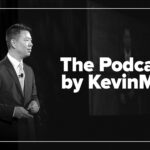Leadership in any industry, especially in health care, demands a delicate balance of trust, ethical judgment, and professionalism. However, when leaders view collaboration through a lens of suspicion, assuming that employees are conspiring against them, it can lead to a culture of distrust and unprofessional behavior. This article delves into the psychological and ethical aspects of such behavior, its impact on workplace dynamics, and practical strategies for navigating these challenging situations.
Understanding the mindset
Leadership paranoia often stems from deeper insecurities, past betrayals, or a fundamental lack of trust. In health care settings, where ethical standards and confidentiality are critical, a paranoid leader may misinterpret collaborative efforts as undermining their authority. Legal considerations, such as privacy violations or defamation through unjust accusations, can further complicate these dynamics. Leaders driven by a need for control may mistakenly view teamwork as collusion or see constructive criticism as a threat, creating an environment of fear and suspicion.
Manifestations of paranoia
Paranoid leaders may use unprofessional, accusatory communication—particularly through emails filled with passive-aggressive language, unwarranted accusations, or attempts to assert dominance. In health care, where accurate, respectful communication is essential, this behavior can disrupt patient care, compromise ethical standards, and damage team cohesion. Employees may feel scrutinized, mistrusted, and burdened by constant self-justification, leading to emotional exhaustion and decreased morale.
Consequences for the organization
When paranoia clouds leadership judgment, the repercussions can be severe. Team cohesion weakens, creativity suffers, and staff turnover increases as employees seek healthier, more supportive environments. According to a survey conducted by the Society for Human Resource Management (SHRM), 58 percent of employees who left their jobs cited poor management and lack of trust as primary reasons. In health care, where teamwork is vital to patient outcomes, such a toxic atmosphere can compromise patient safety and ethical standards. A study published in the Journal of Patient Safety found that 70 percent of medical errors were attributed to poor team communication and dysfunctional leadership.
Additionally, from a legal standpoint, accusations rooted in paranoia can lead to defamation claims or ethical violations, damaging the organization’s reputation. The American Medical Association (AMA) reports that health care organizations facing legal challenges due to leadership issues see a 15 percent increase in malpractice insurance premiums and a 20 percent decrease in patient trust and satisfaction.
Navigating a paranoid leadership style
For health care professionals navigating such dynamics, maintaining professionalism and adhering to ethical guidelines are essential. Documenting incidents, using factual and respectful language, and seeking mediation can help address conflicts constructively. It is also crucial to understand the limits of one’s professional boundaries to avoid overstepping, which could trigger further suspicion.
From an organizational perspective, investing in leadership development, promoting a culture of transparency, and providing training in conflict resolution and emotional intelligence can mitigate the damage caused by paranoid leadership. Regular feedback mechanisms and clear communication protocols can also help build a more trusting, ethical work environment. According to the Harvard Business Review, organizations that implemented leadership training programs saw a 30 percent reduction in employee turnover and a 25 percent increase in overall job satisfaction.
Effective leadership requires trust, self-awareness, and respect for ethical and legal boundaries. When suspicion overshadows collaboration, the entire organization suffers. Understanding the psychological and ethical dimensions of paranoid leadership can help employees and organizations navigate these challenges while upholding professionalism and patient care standards.
Alyaa Yusuf is a nurse in Bahrain.



















![Catching type 1 diabetes before it becomes life-threatening [PODCAST]](https://kevinmd.com/wp-content/uploads/Design-2-190x100.jpg)
![Medical brain drain leaves vulnerable communities without life-saving care [PODCAST]](https://kevinmd.com/wp-content/uploads/Design-1-190x100.jpg)

